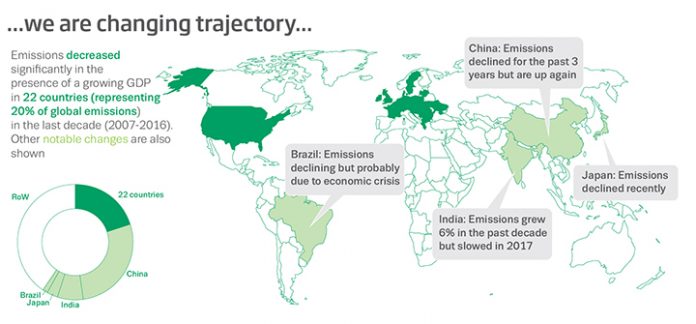Global carbon emissions are on the rise again in 2017 after three years of little-to-no growth, according to researchers at the University of East Anglia and the Global Carbon Project.
It was previously hoped that emissions might soon reach their peak after three stable years, so the new projection for 2017 is an unwelcome message for policy makers and delegates at the UN Climate Change Conference (COP 23) in Bonn this week.
The research, published today simultaneously in the journals Nature Climate Change, Earth System Science Data Discussions and Environmental Research Letters, reveals that global emissions from all human activities will reach 41 billion tonnes in 2017, following a projected 2% rise in burning fossil fuels.
The figures point to China as the main cause of the renewed growth in fossil emissions – with a projected growth of 3.5%.
CO2 emissions are expected to decline by 0.4% in the US and 0.2% in the EU, smaller declines than during the previous decade.
Increases in coal use in China and the US are expected this year, reversing their decreases since 2013.
Lead researcher Prof Corinne Le Quéré, director of the Tyndall Centre for Climate Change Research at UEA, said: “Global CO2 emissions appear to be going up strongly once again after a three year stable period. This is very disappointing.
“With global CO2 emissions from human activities estimated at 41 billion tonnes for 2017, time is running out on our ability to keep warming well below 2ºC let alone 1.5ºC.
“This year we have seen how climate change can amplify the impacts of hurricanes with more intense rainfall, higher sea levels and warmer ocean conditions favouring more powerful storms. This is a window into the future. We need to reach a peak in global emissions in the next few years and drive emissions down rapidly afterwards to address climate change and limit its impacts.”







